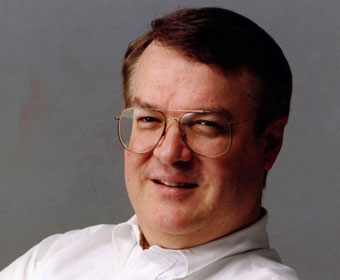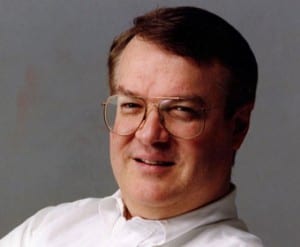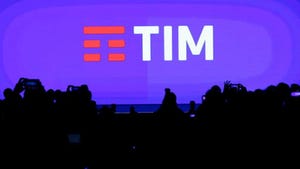

leesparkman
Lee Sparkman, Enforta
Lee Sparkman, president of broadband operator Enforta, is making WiMAX happen in Russia.
The name Enforta comes from combining the Latin word ‘forte’ (strong) with ‘enforce’. It is an appropriately purposeful moniker for a company that claims to have the largest WiMAX footprint in Russia with operations in 55 cities across the country.
“What distinguishes us from other WiMAX players in Russia is that [the management] has experience in rolling out telecom networks in emerging markets,” says Lee Sparkman, president of Enforta. “We have managed to do what we have said we will do.”
Sparkman, along with Victor Ratnikov – Enforta’s general director – founded the company in October 2003. Both have experience of network deployment in emerging markets in the AMEA region (Africa, Middle East, Asia) for Global One in the 1990s. Both have also been part of the senior management team at Transtelecom, one of Russia’s largest fibre-optic backbone providers.
“With high-capacity core networks already being rolled out, we saw the next telecom challenge in Russia as being in the access part,” explains Sparkman on why he left Transtelecom to found Enforta with Ratnikov. “And the opportunity in the country is enormous. In terms of internet users, Russia ranks 11th in the world but in terms of broadband subscriber penetration it’s only in about 60th position. There is enormous growth potential.”
Russia has a population of around 142 million and, according to Pyramid Research, had 35 million internet users by the end of 2007. That translates into an internet user penetration rate of just under 25 percent. By contrast, the broadband subscriber penetration rate was barely above three percent by the end of last year.
Although analysts report that economic growth is slowing down due to tighter credit conditions and stagnating oil production, recent years have still seen solid GDP growth on the back of Russia’s thriving energy sector. According to the EIU (Economist Intelligence unit), Russia’s GDP growth was 8.5 percent for the 12 months ended 31 March 2008. The EIU forecasts GDP growth to fall slightly for 2008 as a whole (7.5 percent), and down to 6.8 percent growth for 2009.
Despite the economic improvements over the last few years, it is still difficult, according to Sparkman, to make a profitable play for Russia’s broadband consumer. “This is a very price sensitive market,” he says. “Broadband ARPU in the regional cities is about $20 per month and about $17 in Moscow and St Petersburg. The low price points make it a challenge to generate a profit to serve consumers, although it is not impossible to do that via WiMAX if it is used in a shared network configuration. For example, we have a consumer solution that allows multiple subscribers to share a single WiMAX transceiver.”
Getting down to business While Enforta has managed to attract just over 7,000 consumer customers, its main target markets are SMEs and corporates, which are not as price sensitive. It has over 20,000 business customers using non-subsidised outdoor Fixed WiMAX CPE equipment, which typically retails for $399 per unit (including installation costs).
“VPNs are proving extremely popular as business customers in Russia are very reticent about transferring data over the public internet,” says Sparkman. “We can provide the security levels they’re after.”
Enforta typically provides its corporate customers with internet, local and national VPN, email, and telephony services at prices starting as low as $49 per month.
The company’s main supplier is Alvarion, which provides WiMAX kit in the two frequencies used by the Russian ISP: the 5.2GHz frequency band- which Enforta has access to in over 100 Russian cities-and the 3.5GHz frequency band where Enforta has spectrum in some 60 Russian cities.
But the amount of spectrum available in 3.5GHz is usually not enough, says Sparkman, for it to be used by Enforta as its primary frequency, Airspan also supplies base stations and CPE to Enforta in the 3.5GHz frequency band, while Infinet supplies pre-WiMAX equipment in 5.2GHz.
To achieve its planned rollout to 68 cities by the end of 2008, Sparkman says the total number of base stations required is around 500, the majority of which have already been deployed.
Despite the 5.2GHz frequency band not yet receiving any standardisation attention by the WiMAX Forum, Sparkman believes it is ideal for serving the higher-bandwidth needs of SME customers, not least because Enforta has so much of it at its disposal-60MHz. “We can achieve distances of up to 8km between the CPE and the base station at 5.2GHz and can offer symmetrical speeds of up to 6Mbps, though the majority of SME customers require only 2Mbps,” he says. “Most vendors now supply WiMAX equipment at 5.2GHz.”
Sparkman points out that distances of up to 10-12km can be achieved between the CPE and the base station at 5.2GHz, but Enforta typically limits that to 8km in order to ensure that all subscribers are operating at efficient QAM 64 modulation.
For the 3.5GHz frequency band, WiMAX Forum certified products are available for the 802.16d standard but Sparkman still doesn’t see any evidence of genuine interoperability between different vendors’ CPE and base stations, which would help drive down Enforta’s costs. “It’s a disappointment,” says Sparkman, “but the good thing about the ‘d’ standard is that it’s been around a long time. All the bugs have been ironed out.”
Holding back on Mobile WiMAX
Sparkman believes the time is not yet right for Mobile WiMAX in Russia if it is used to offer personal broadband services on the move. The price points of 802.16e kit-although coming down-are still too high, says Sparkman, to enable operators to offer the necessary low tariffs to attract customers and still make an adequate return on investment; low laptop penetration in Russia is also an inhibiting factor.
To illustrate his point, Sparkman refers to the low take-up of Golden Telecom’s citywide wifi service in Moscow, which has only managed to attract around 60,000 subscribers since its launch in early 2007; its monthly and daily internet access packages are RUB500 ($20) and RUB100 ($4) respectively. Golden Telecom’s original target, when it launched its ‘Golden wifi’ service, was between 300,000 and 400,00 subscribers by 2010. The operator announced in September 2008 that it would be withdrawing Golden wifi as a public service.
“Russia’s 3G licence holders [MTS, Vimpelcom and Megafon] have also been slow to roll out their higher-speed mobile data services, which suggest that they too don’t see much of a business case yet for mobile broadband,” adds Sparkman.
Enforta is keen to acquire 2.5GHz spectrum and use it for 802.16e equipment, but only for fixed and nomadic applications. “That would give us an opportunity to target the consumer market, as there wouldn’t be sufficient amount of 2.5GHz spectrum to meet the higher bandwidth requirements of business customers,” says Sparkman.
The main obstacle to that plan is Russia’s ministry of telecommunications, which, at the time of going to press, had yet to indicate any timetable for the allocation of 2.5GHz licences. The recent award of 2.5-2.7GHz spectrum to Russian operator Scartel took many market watchers by surprise, adds Sparkman.
Market differentiation There are between 300 and 400 companies registered as broadband wireless access providers in Russia, a large number reflecting the country’s lack of fixed-line infrastructure, particularly in the regions. Among that number are Synterra and Comstar-UTS, two established telecom players in Russia with ambitious WiMAX plans.
Synterra says it will build 802.16e WiMAX networks in 1,000 towns and cities-where it has 2.5GHz-2.7GHz spectrum rights-by the end of 2008.
In June 2008 Comstar-UTS announced it had selected Nortel to supply Mobile WiMAX equipment in Moscow; 160 base stations are to be rolled out in Russia’s capital city by the end of 2008 at a cost of approximately $20m.
But Sparkman doesn’t yet see Russia’s other WiMAX players making much of an impact. “We very rarely run into them when competing for customers,” he says. “It’s the DSL and fibre access providers that we’re up against.” To gain market share, Enforta doesn’t undercut the DSL prices for equivalent downlink speeds.
Instead, Sparkman says the better quality service of the WiMAX network, along with much faster installation times-there to four days as opposed to anywhere between there and six months for the incumbent broadband services- are compelling market differentiators.
Read more about:
DiscussionAbout the Author(s)
You May Also Like








.png?width=300&auto=webp&quality=80&disable=upscale)


_1.jpg?width=300&auto=webp&quality=80&disable=upscale)


.png?width=800&auto=webp&quality=80&disable=upscale)